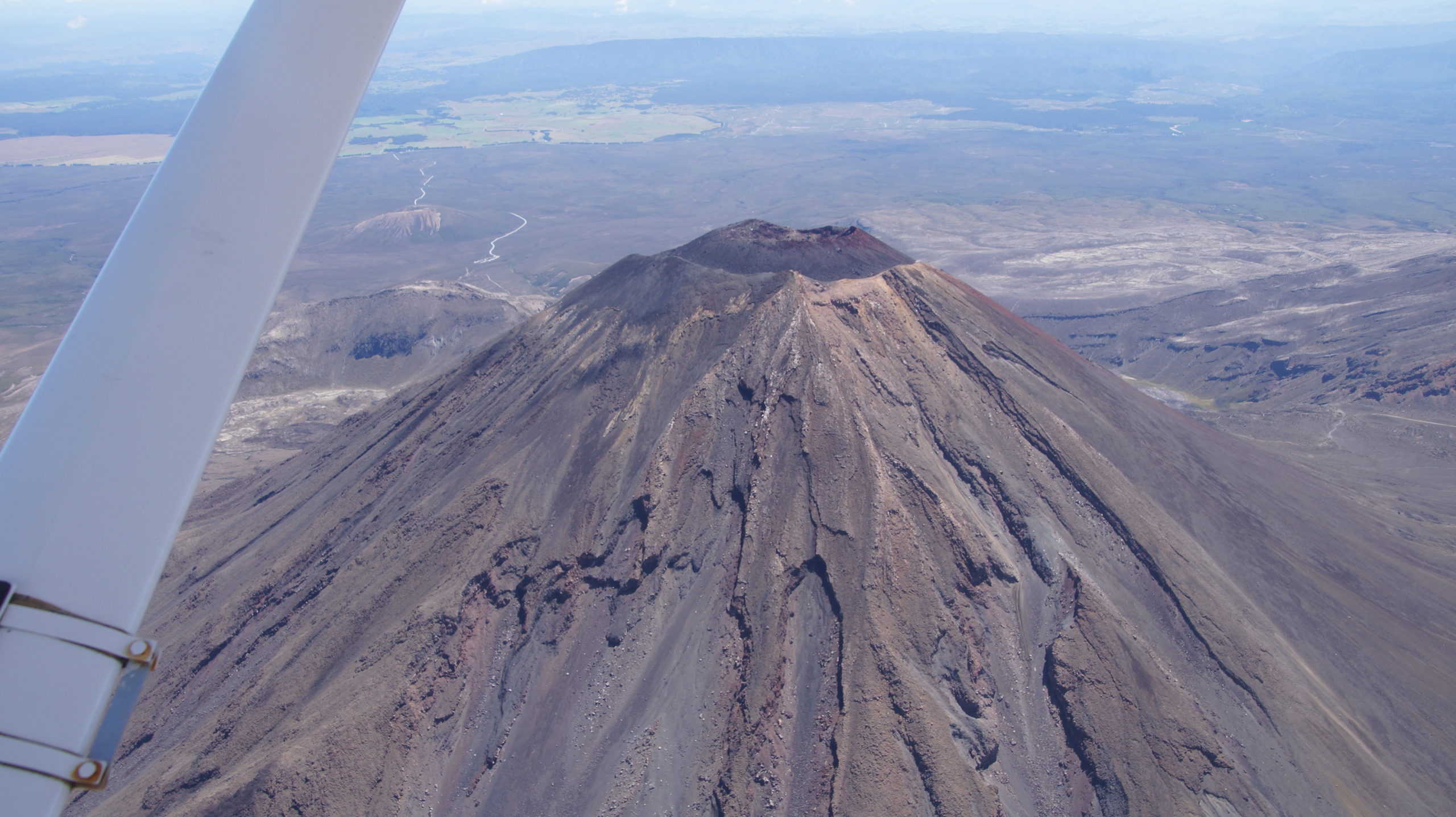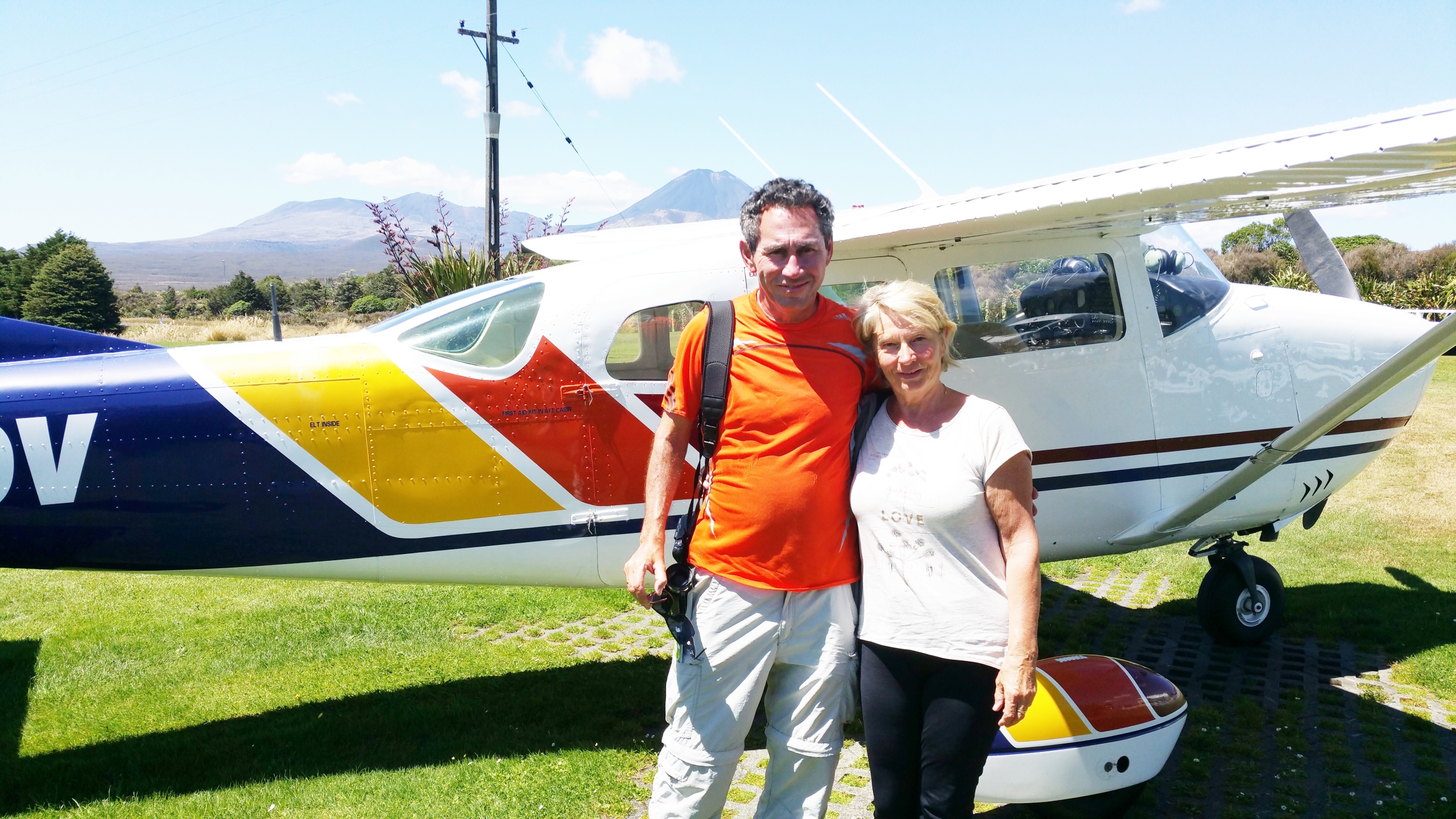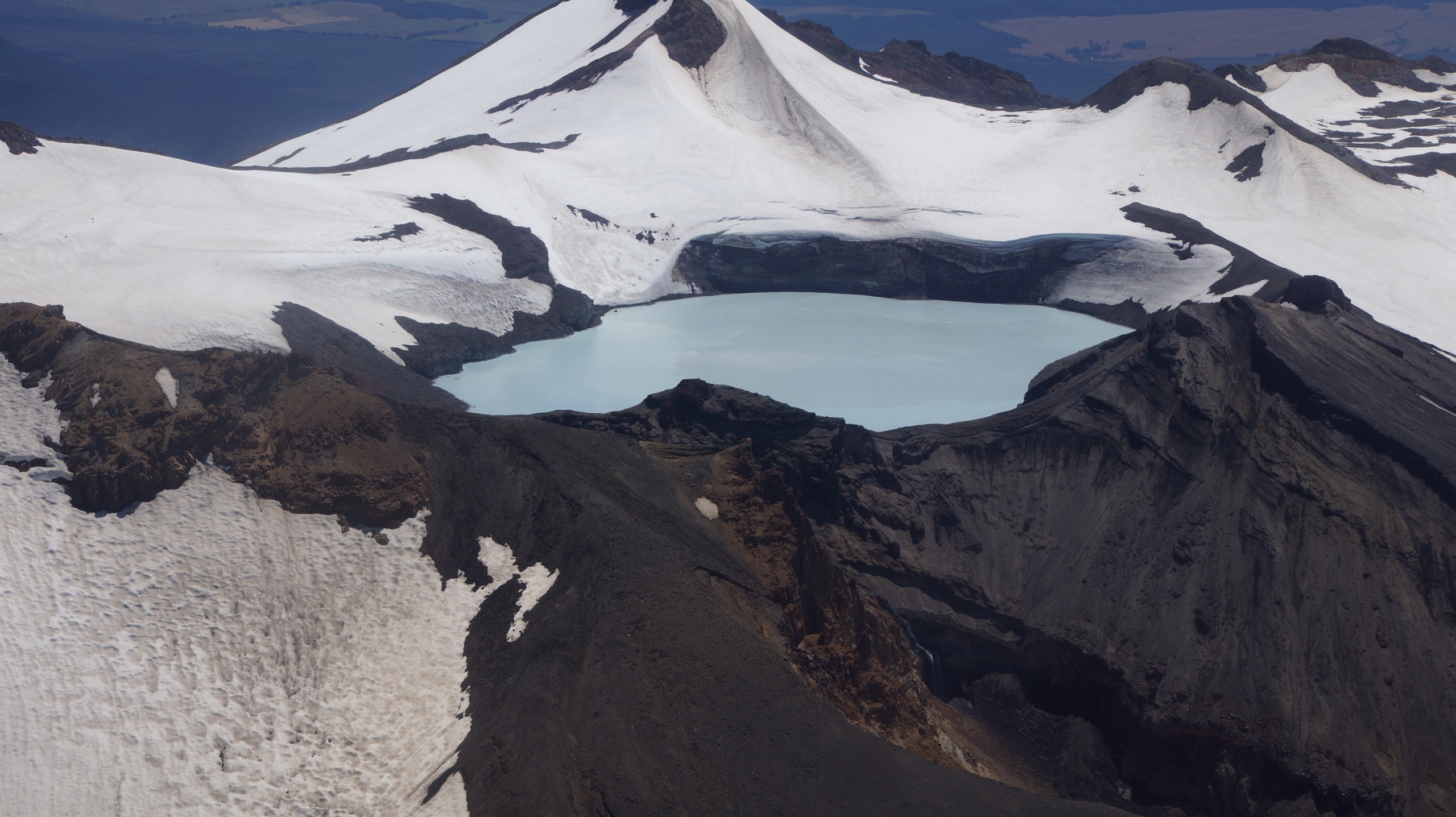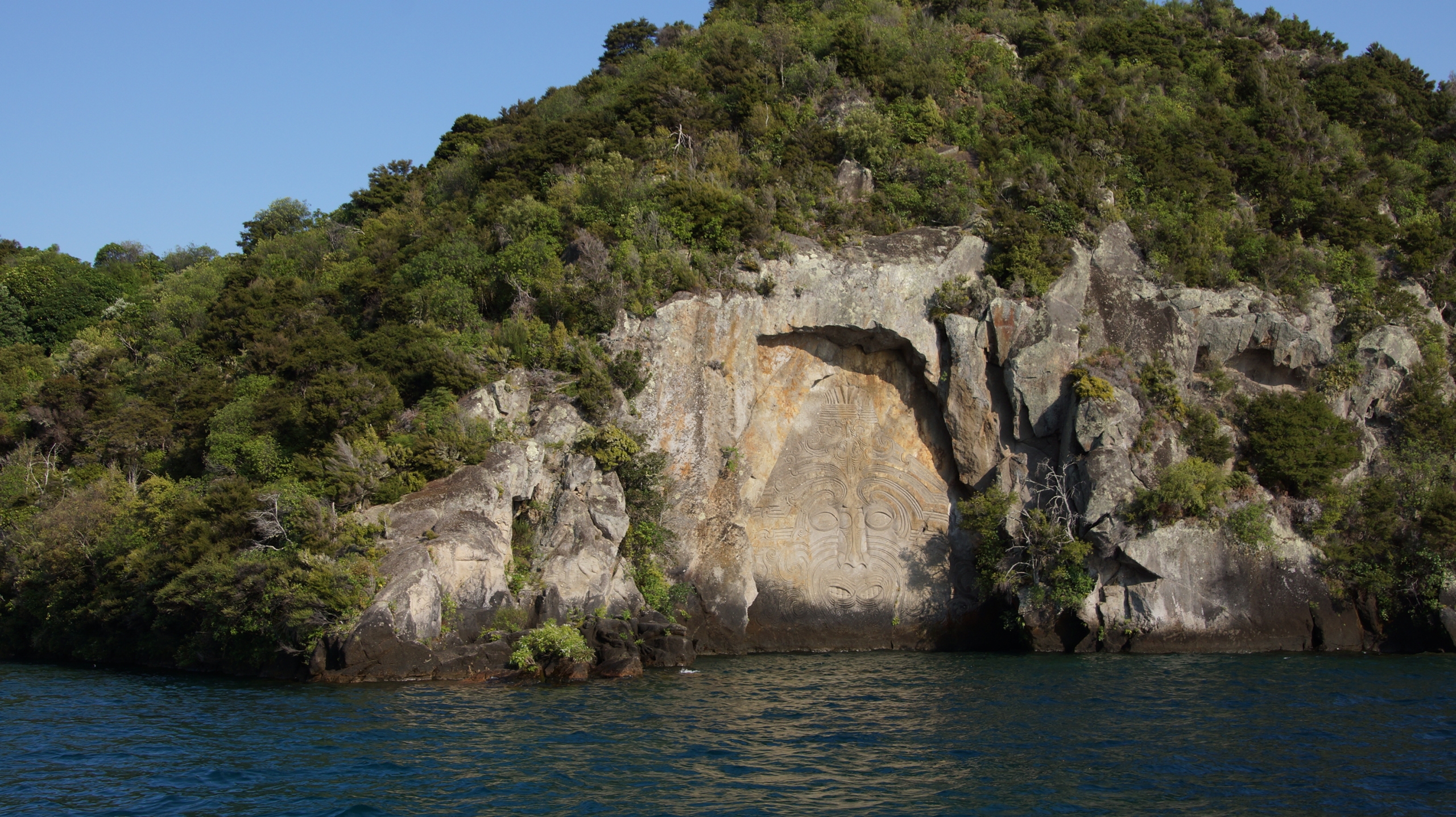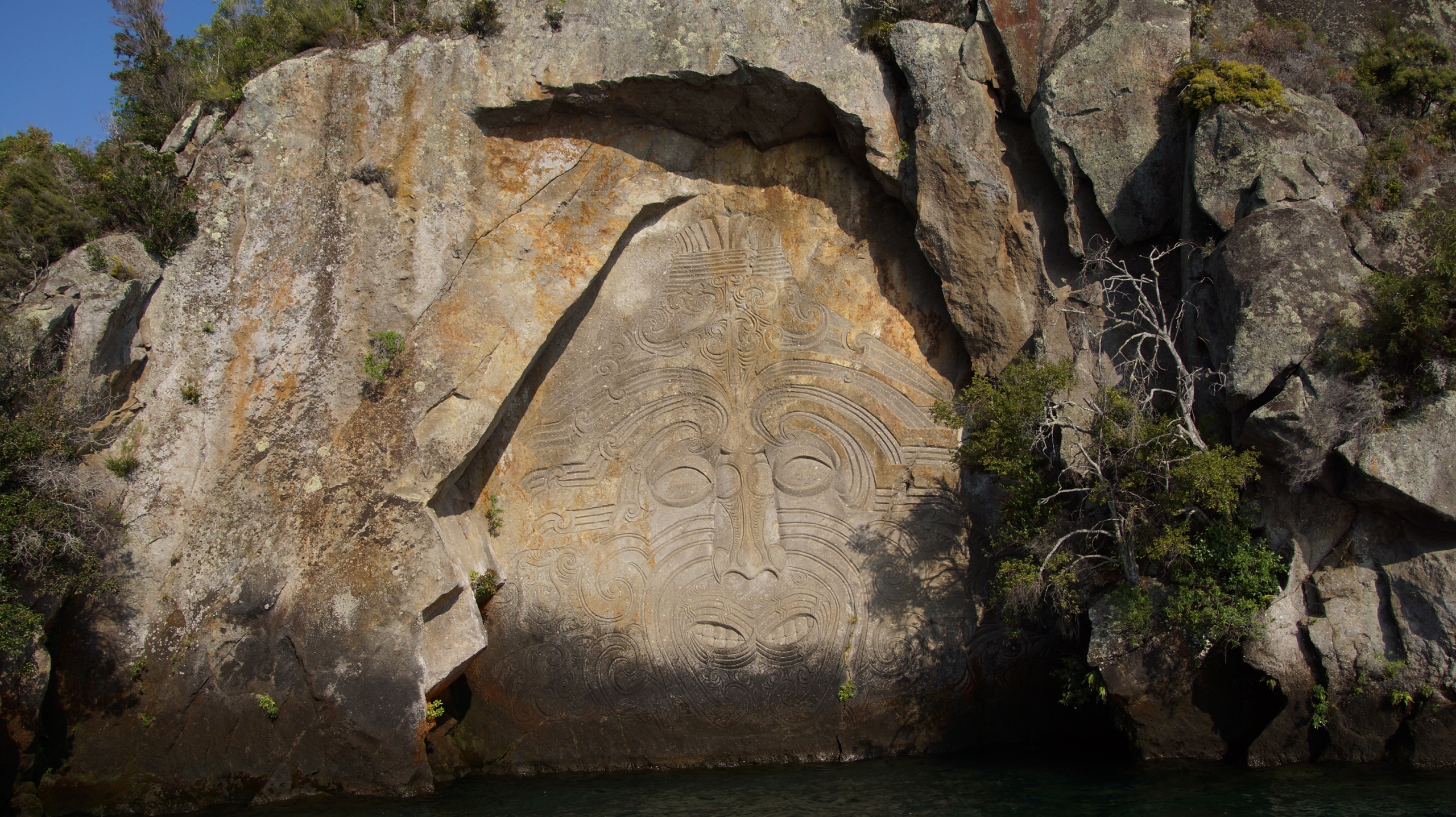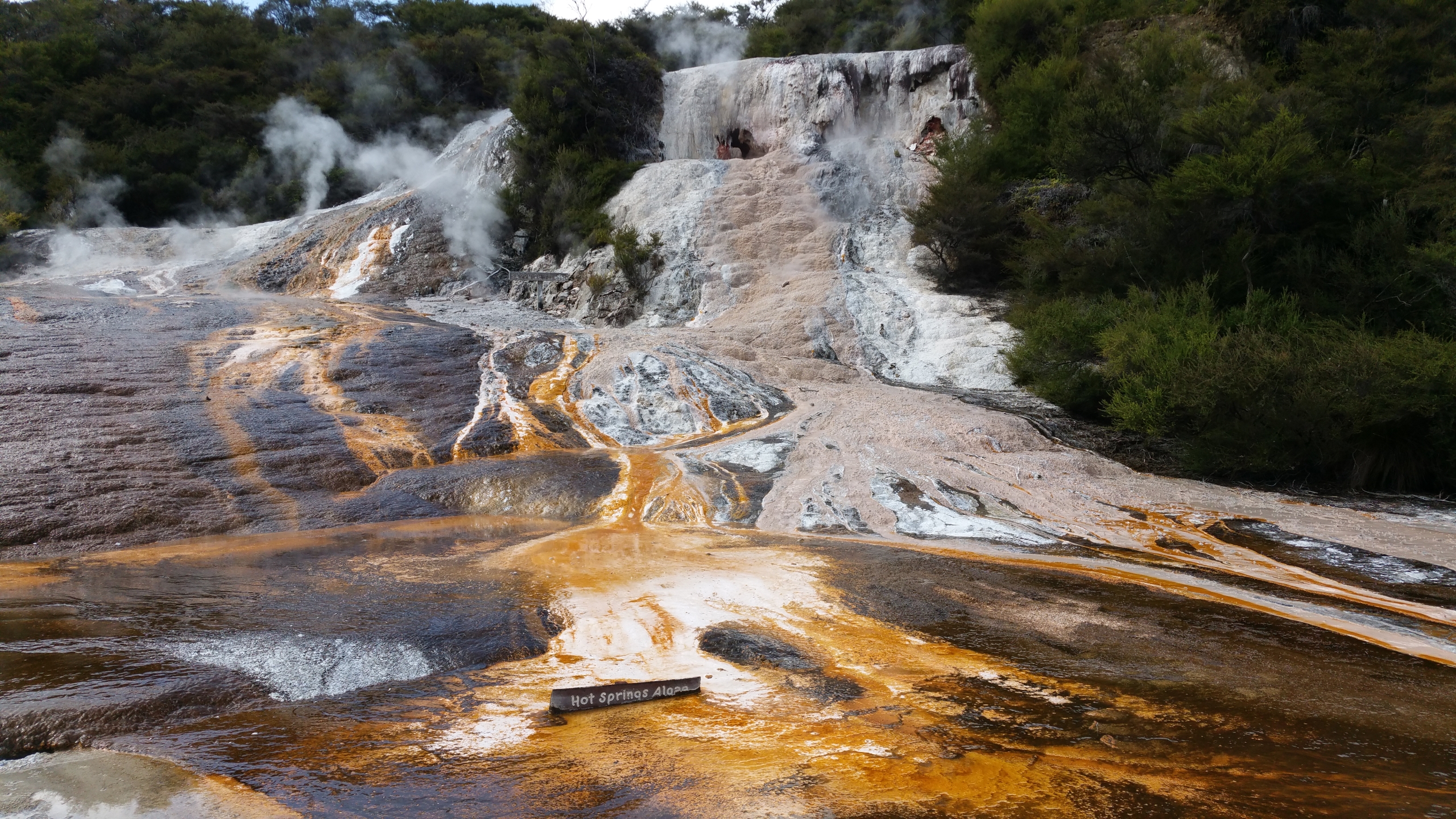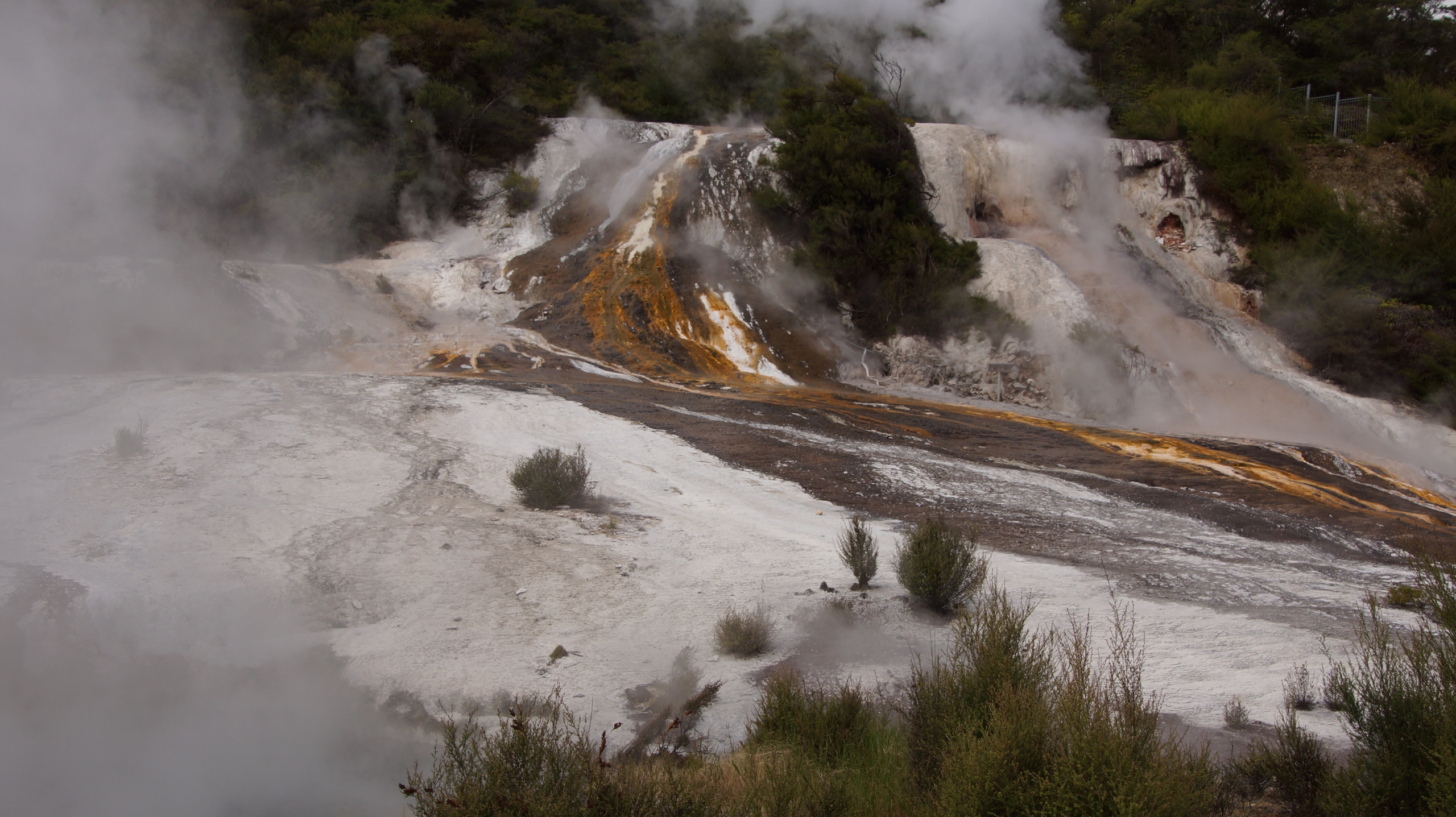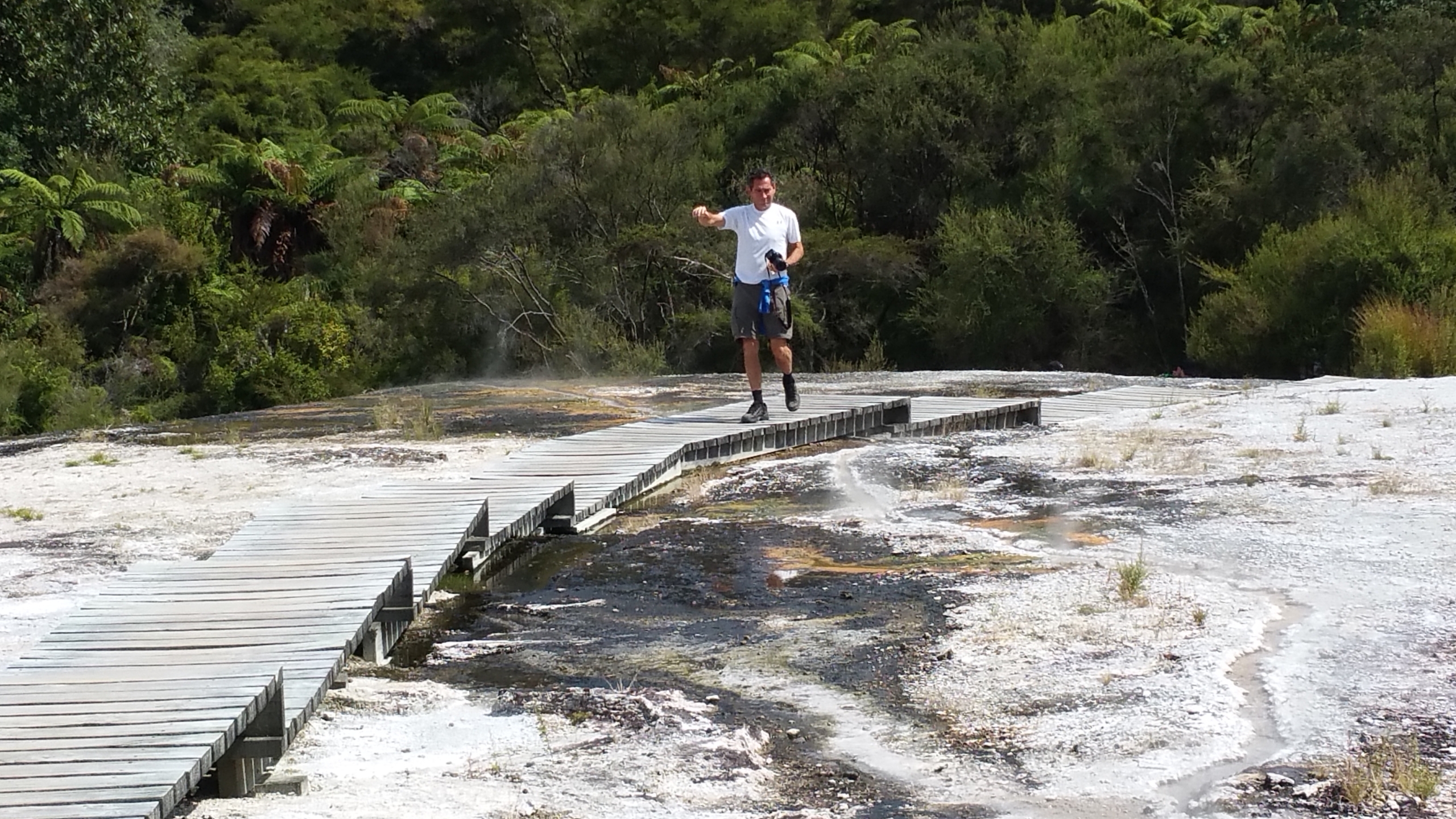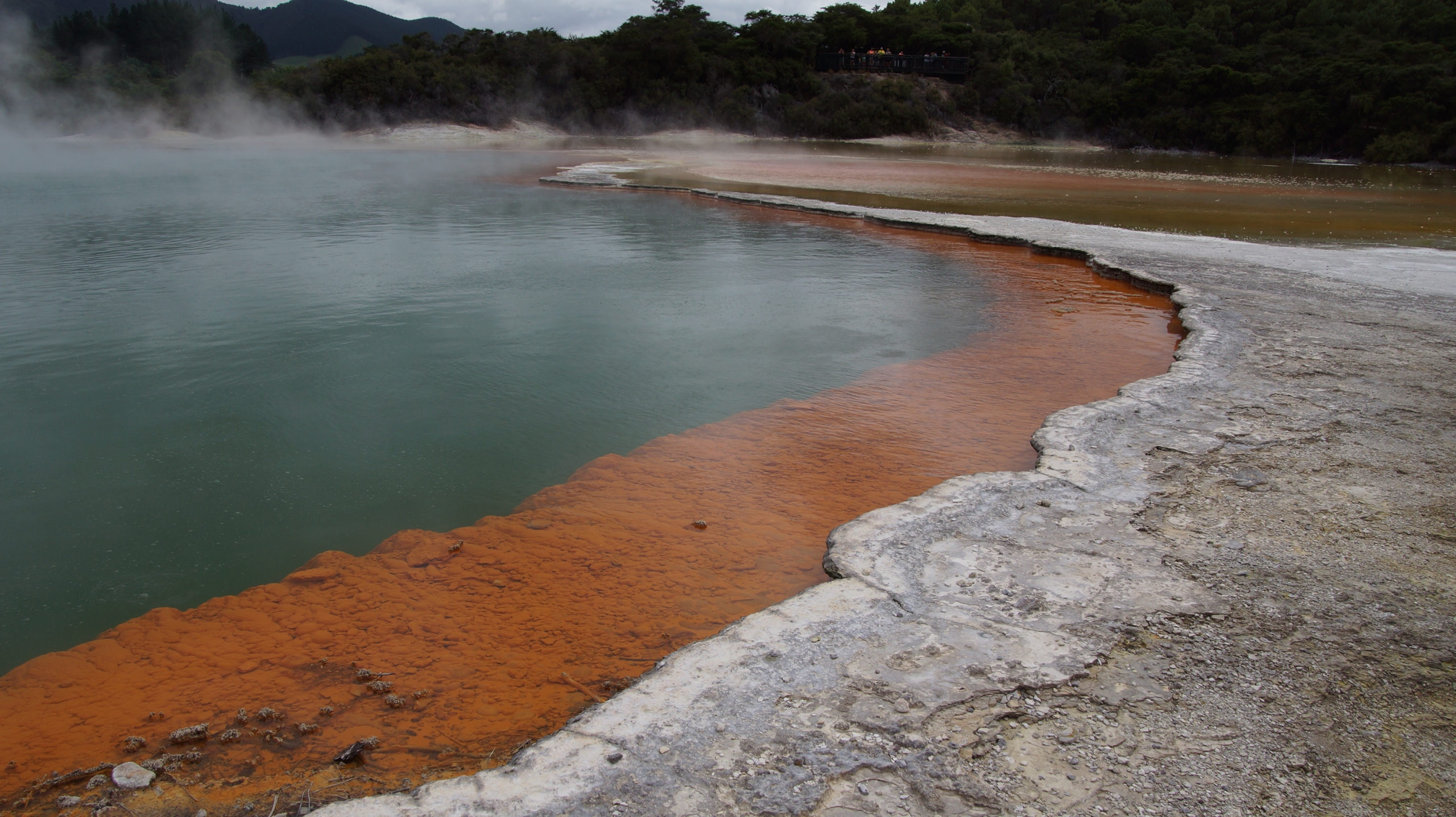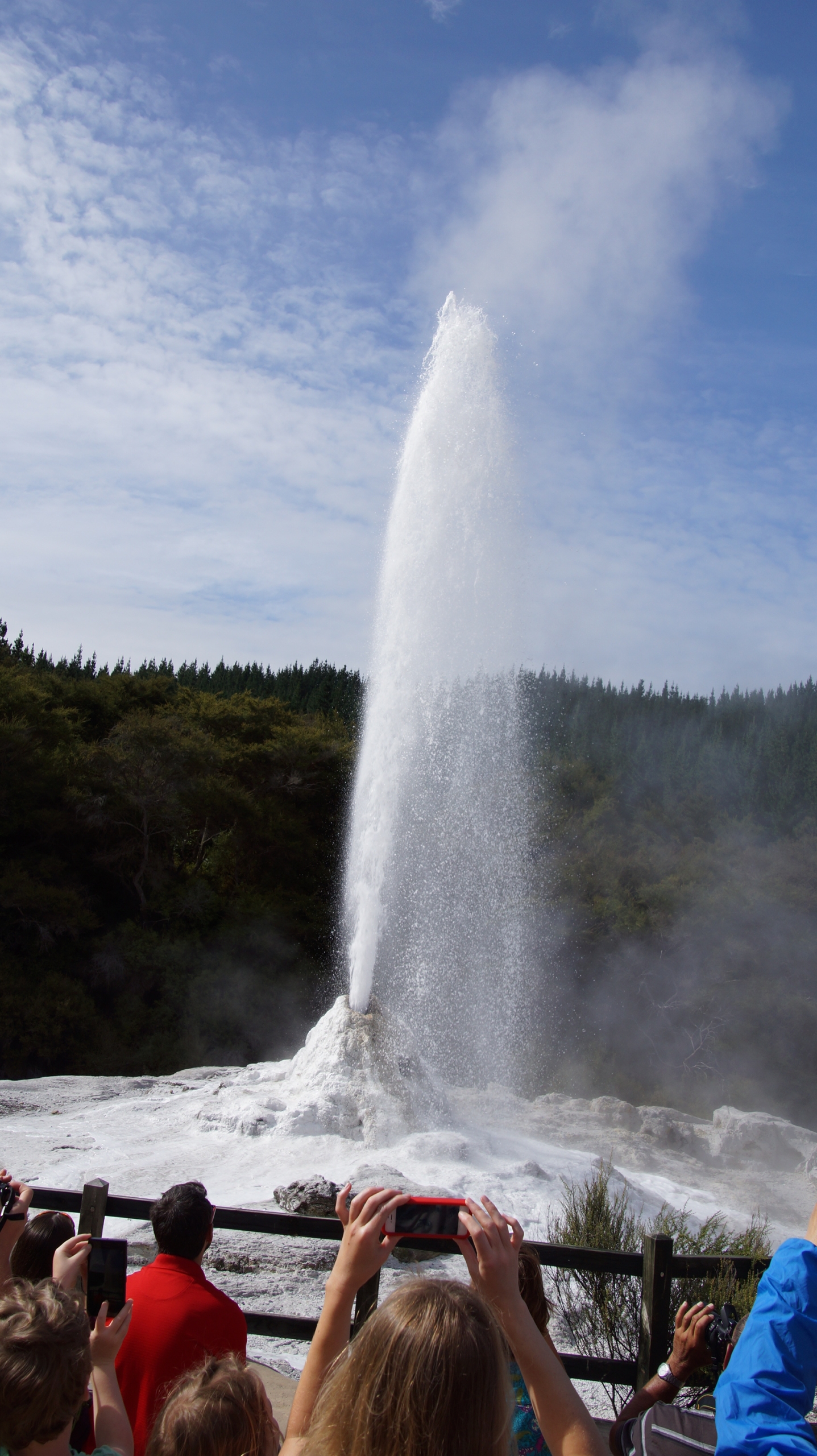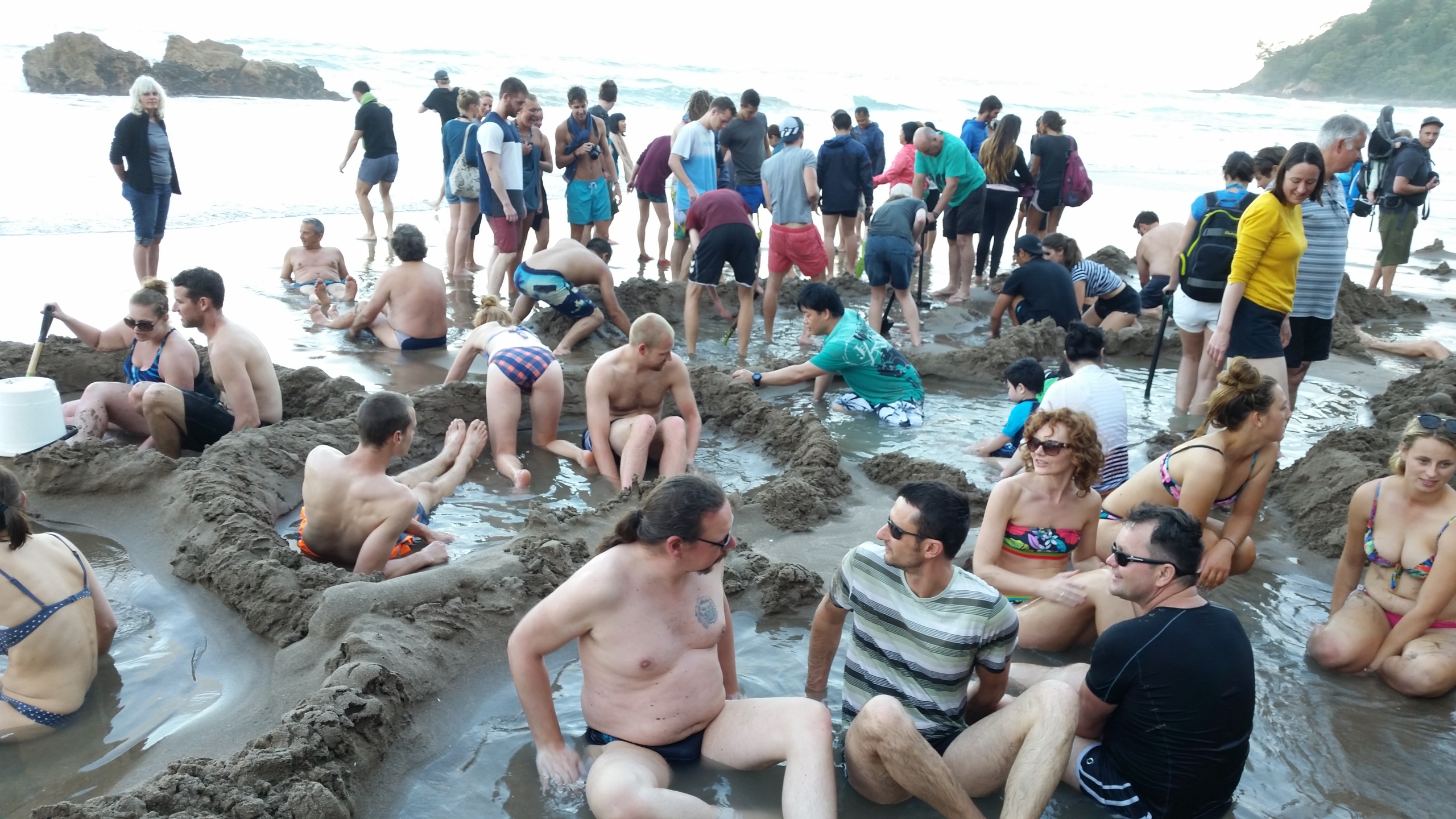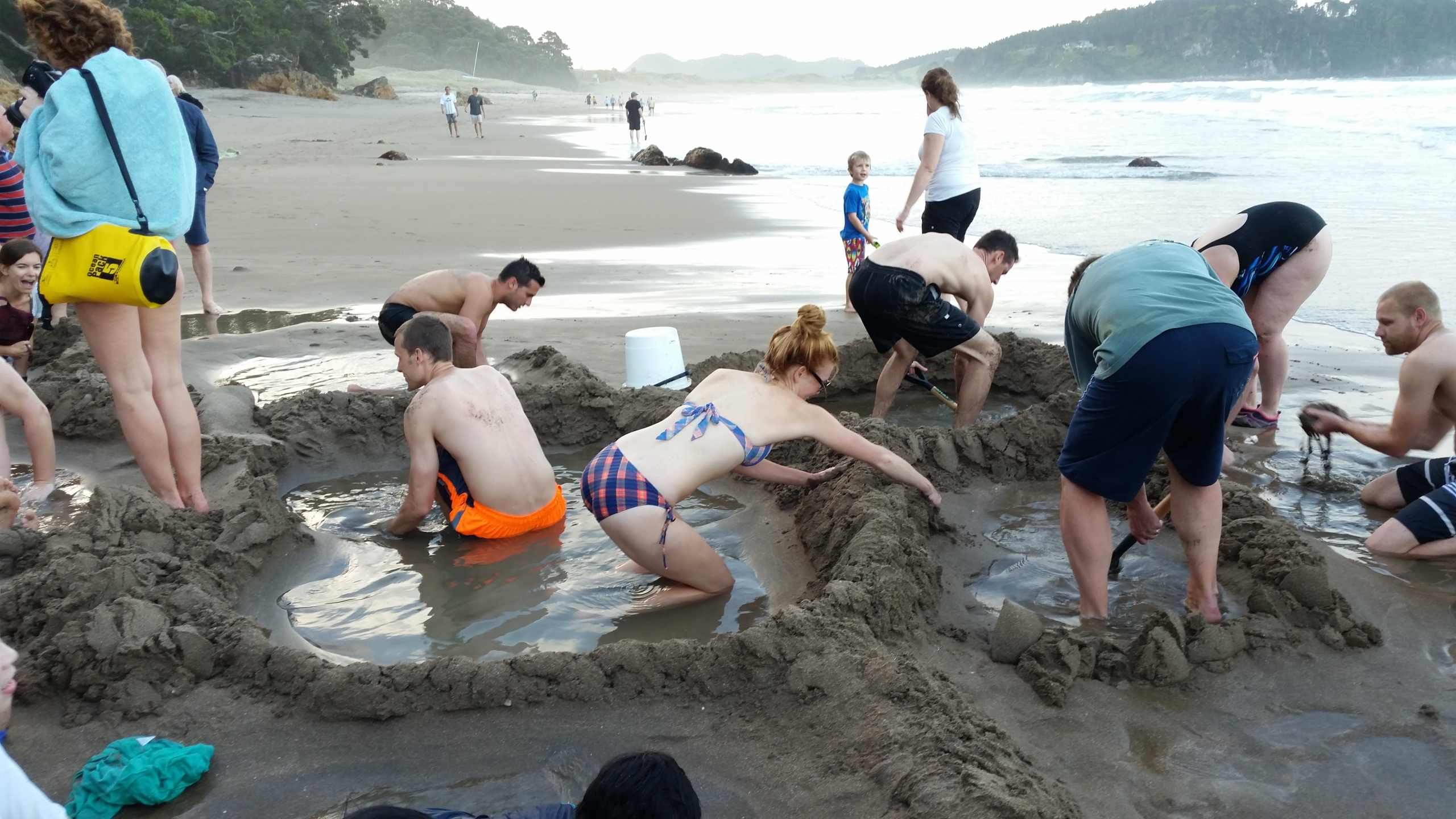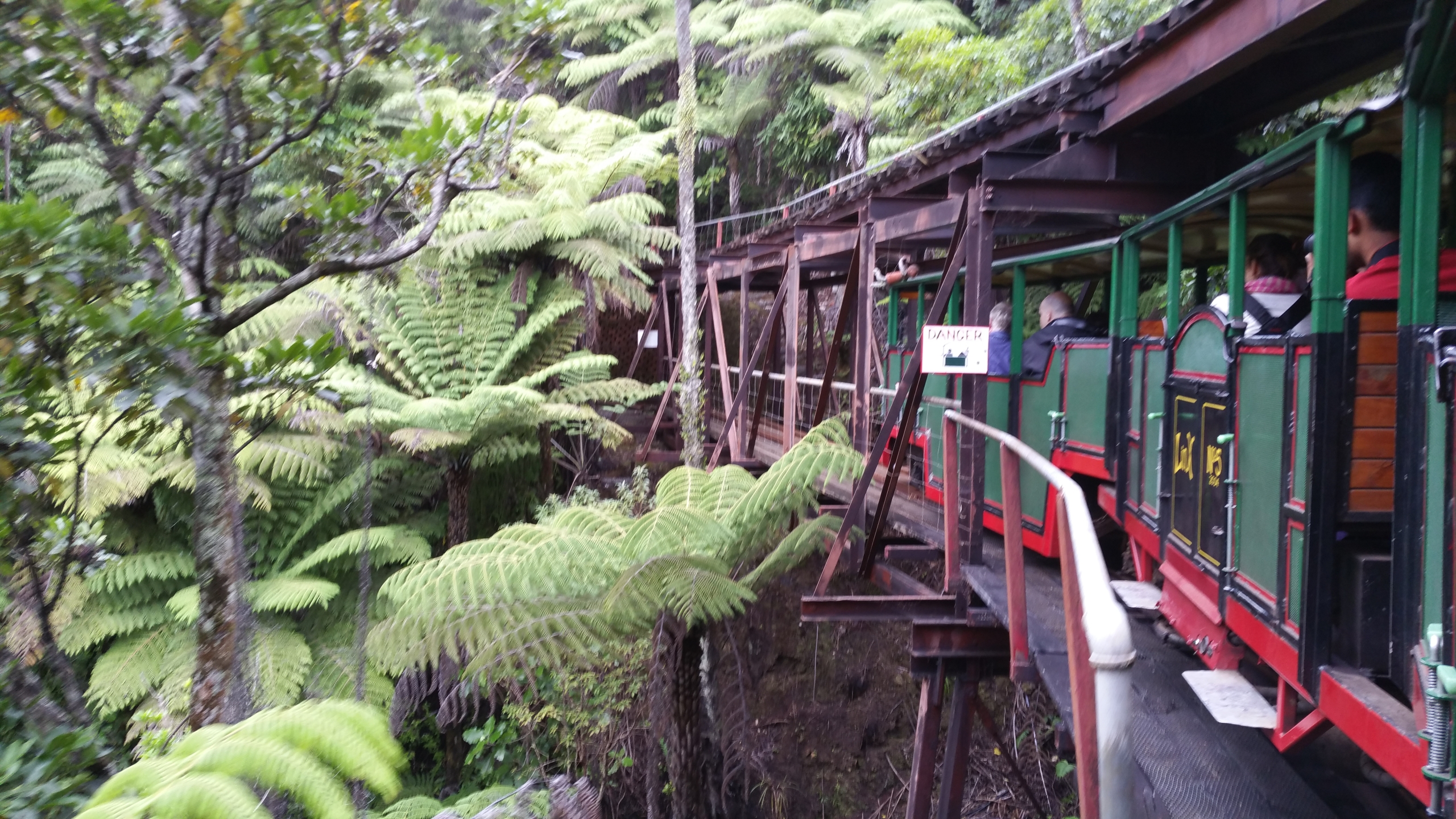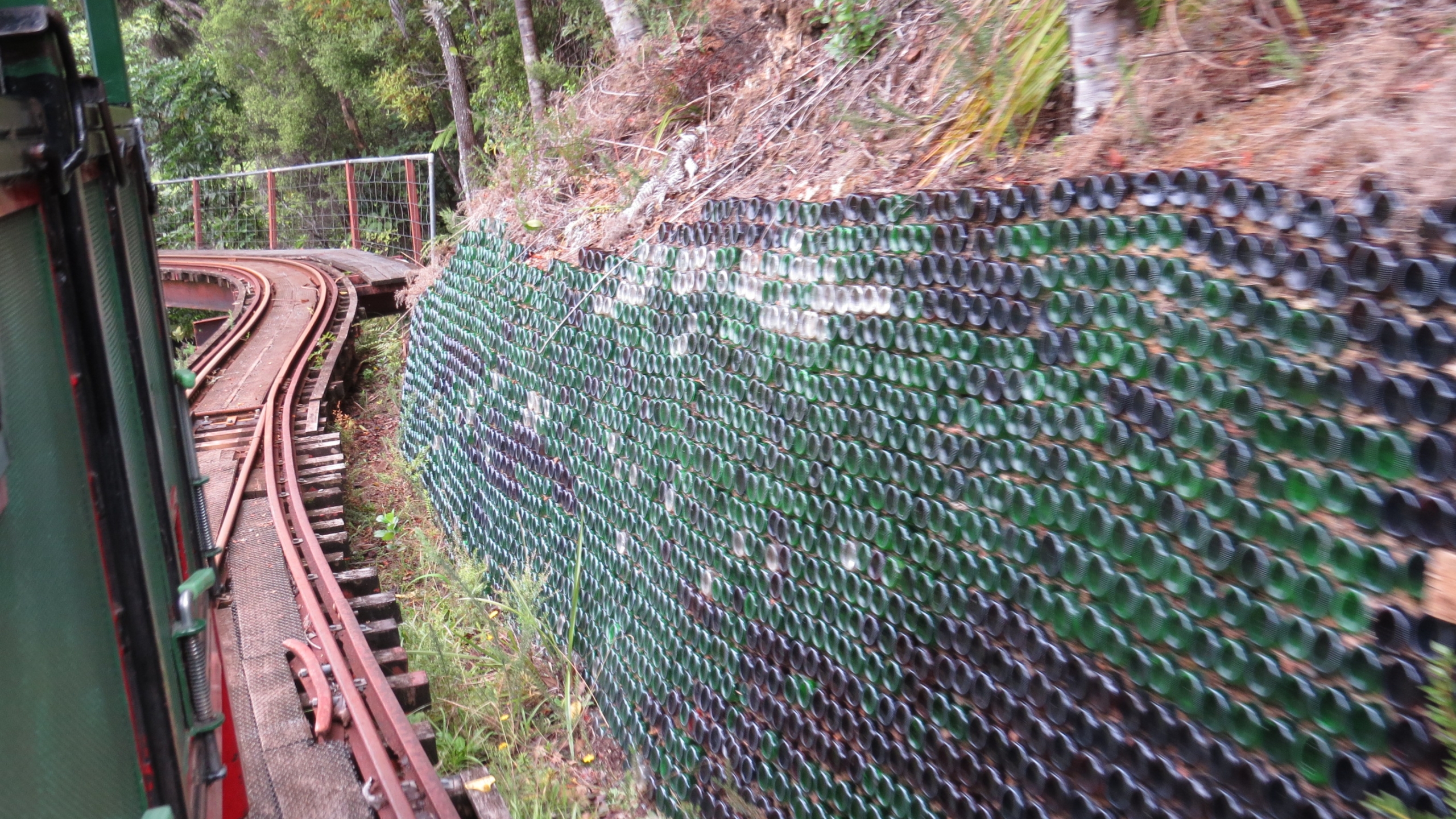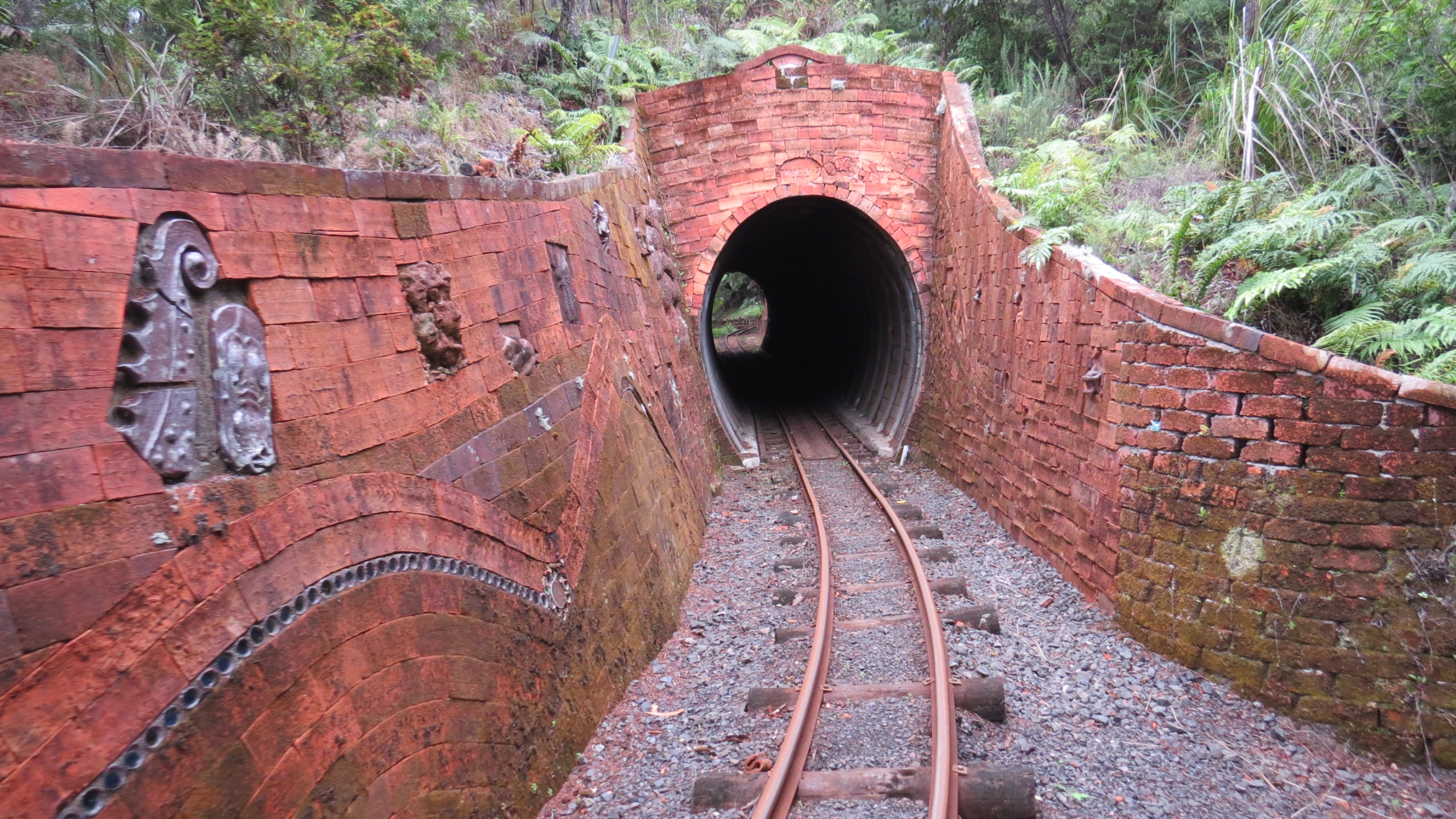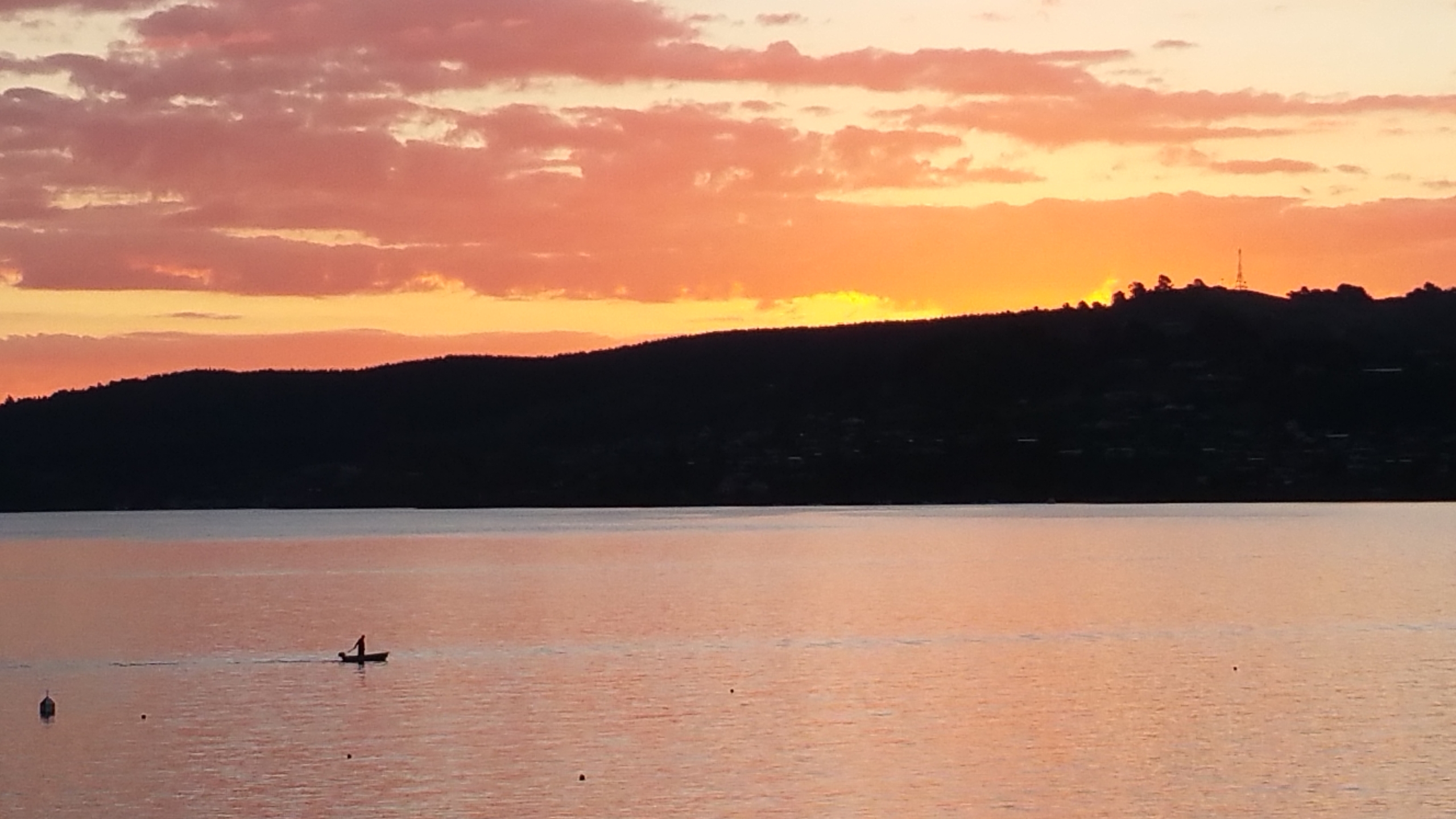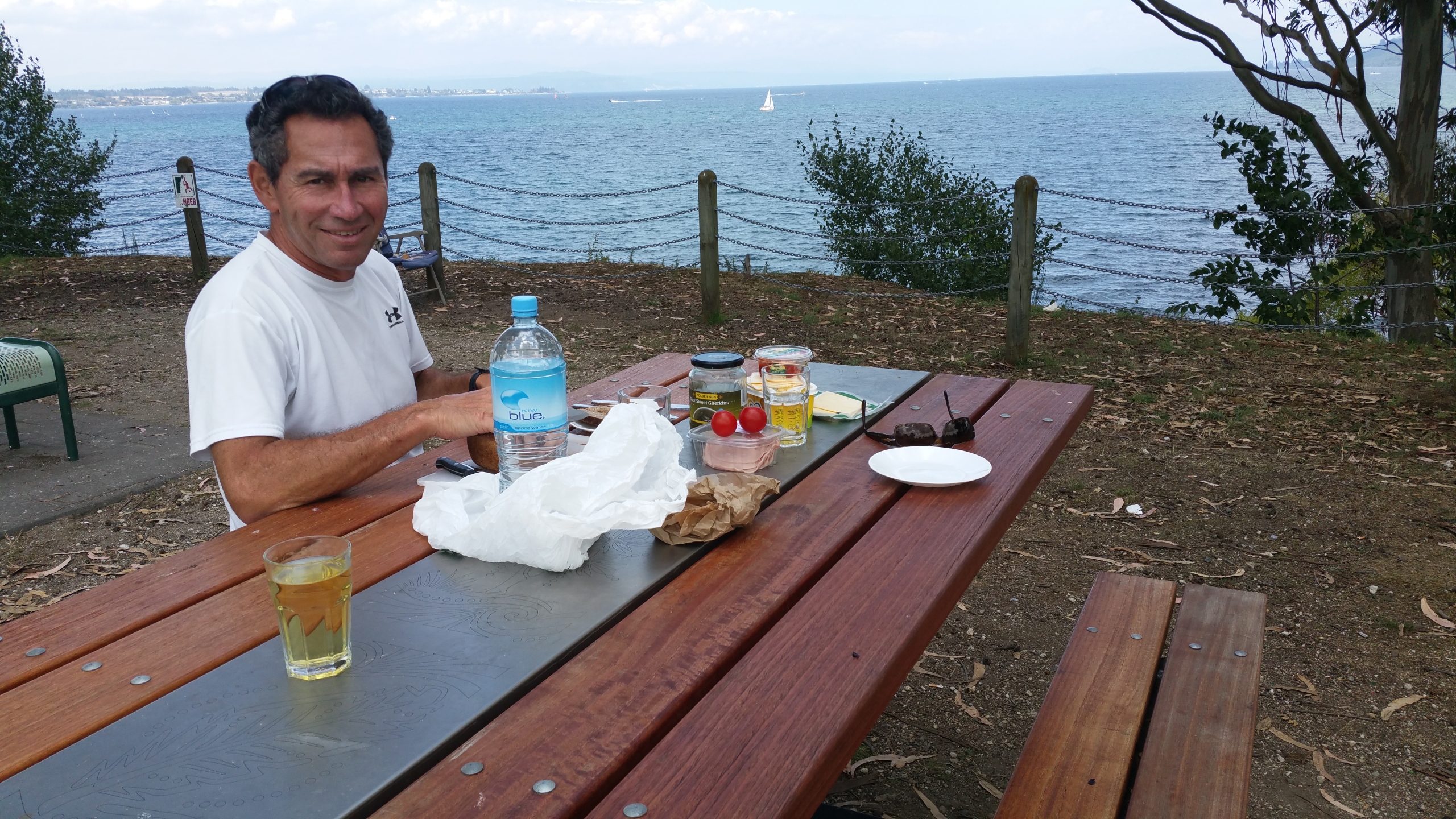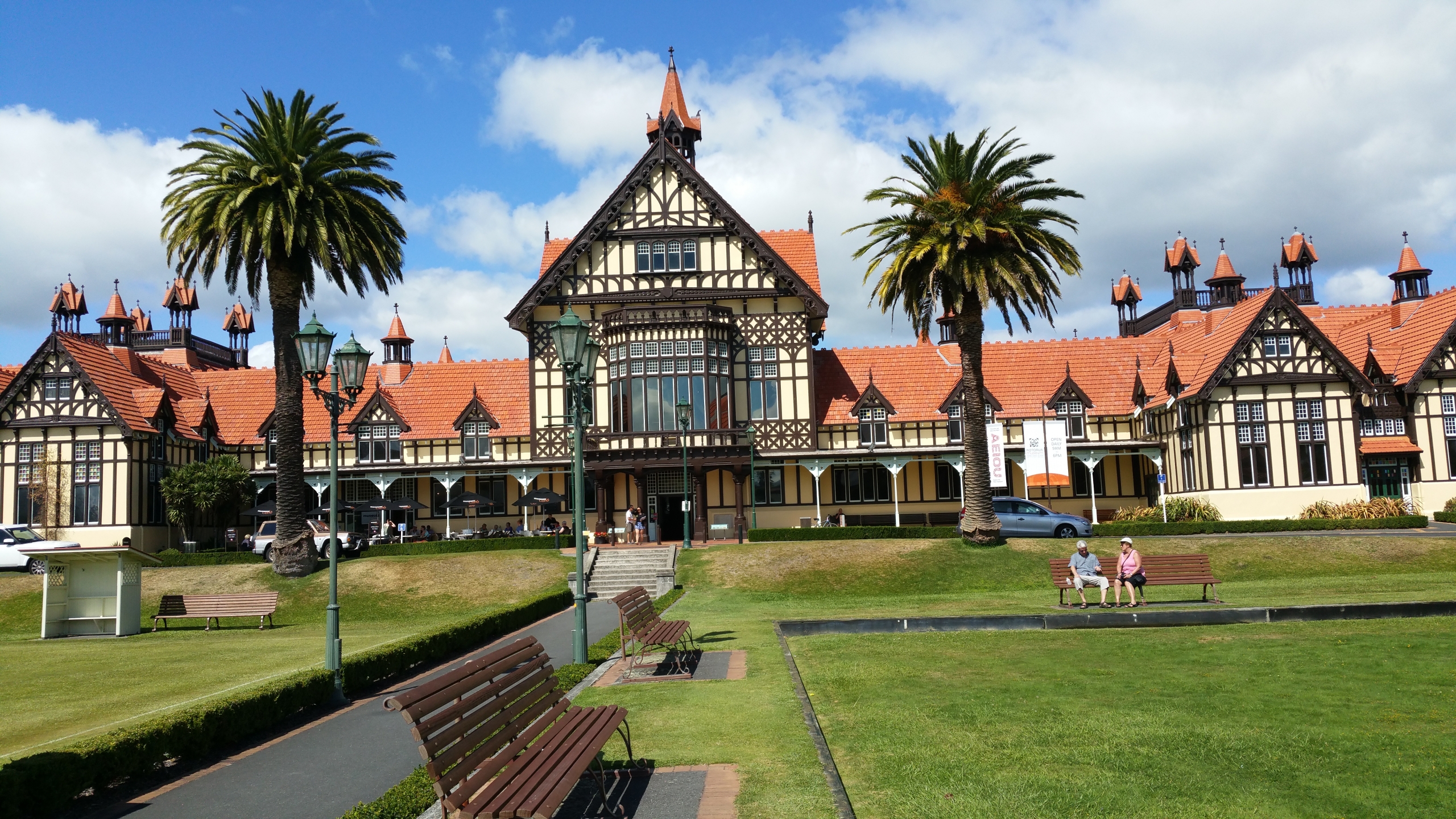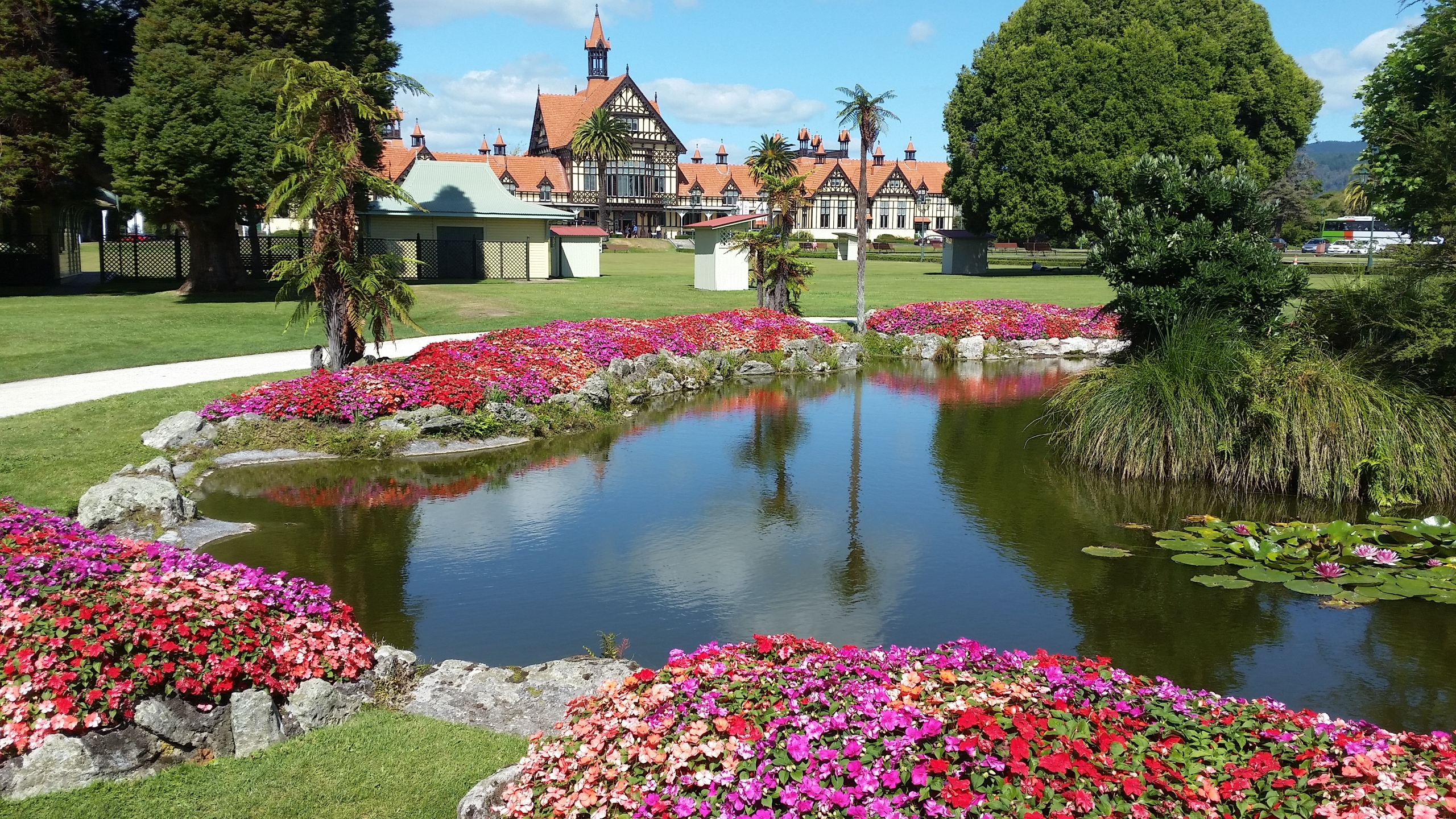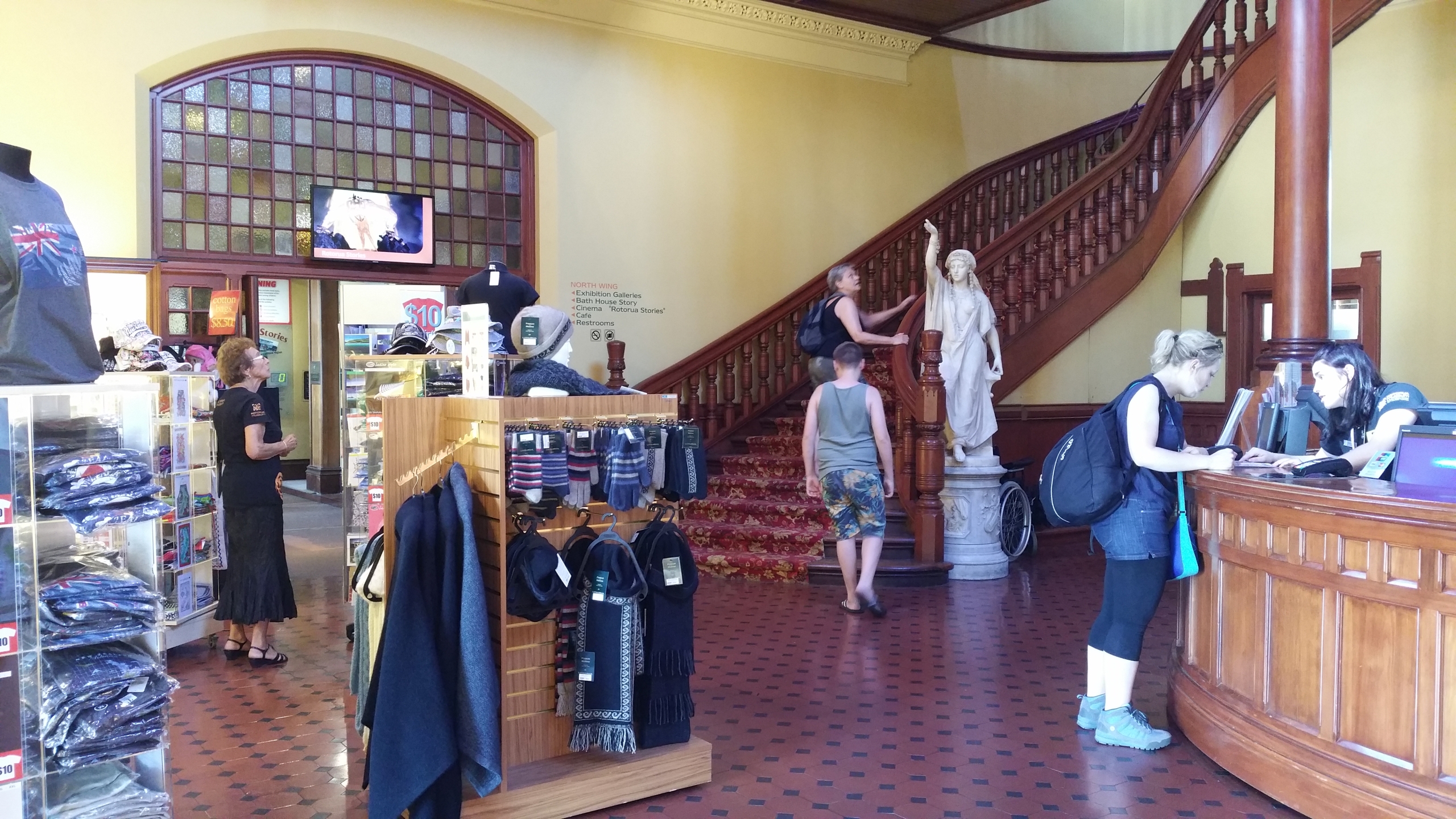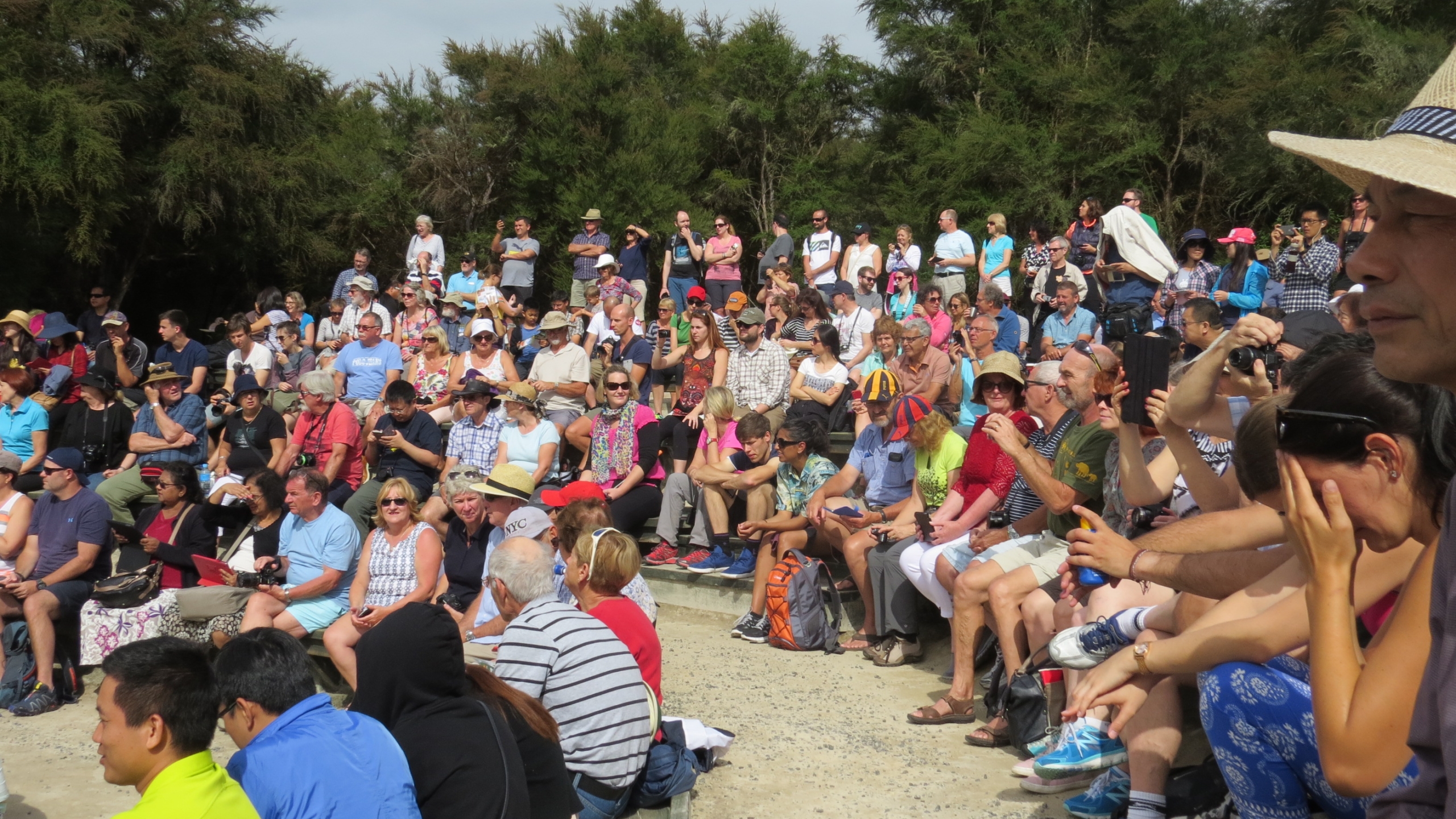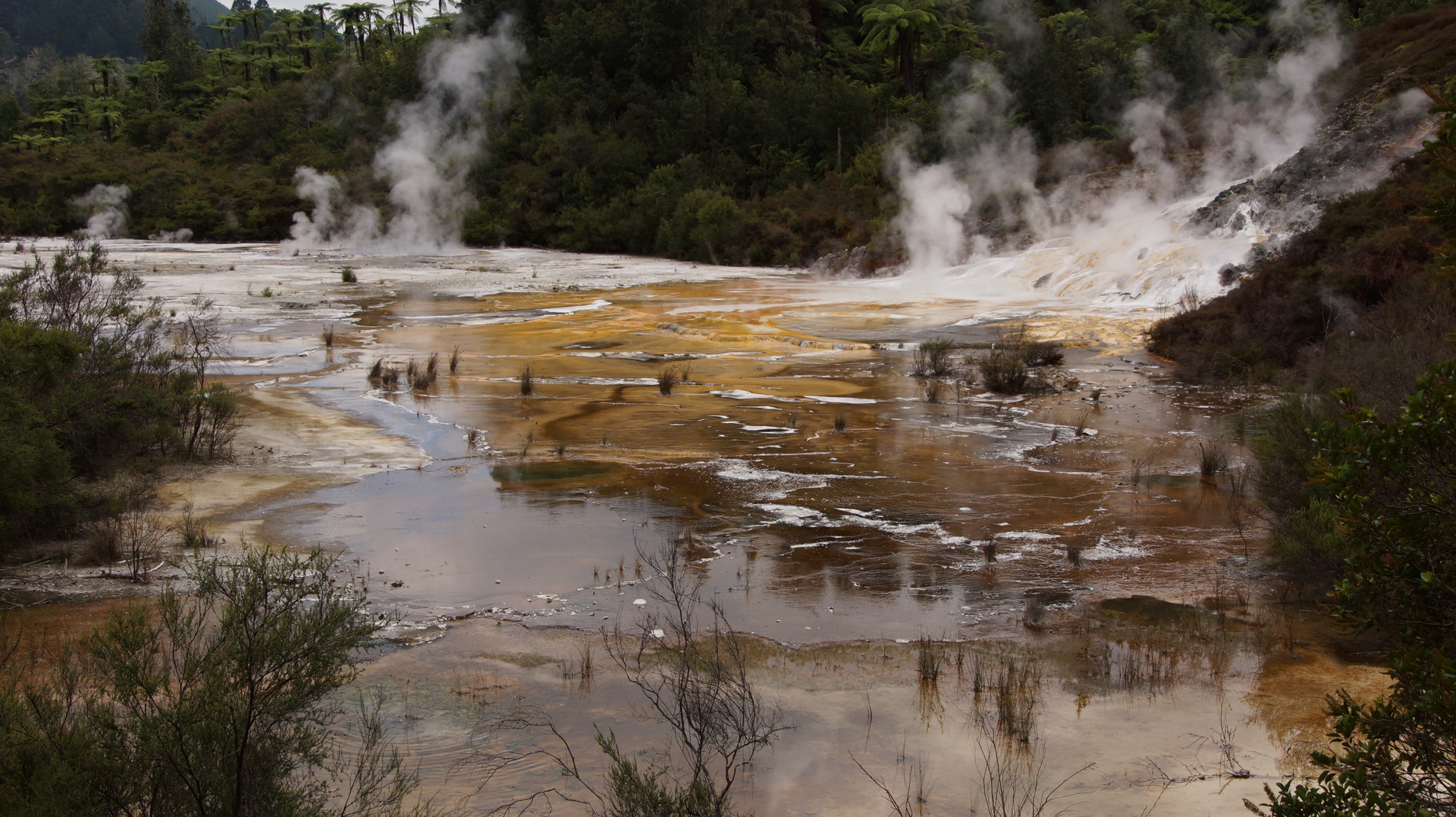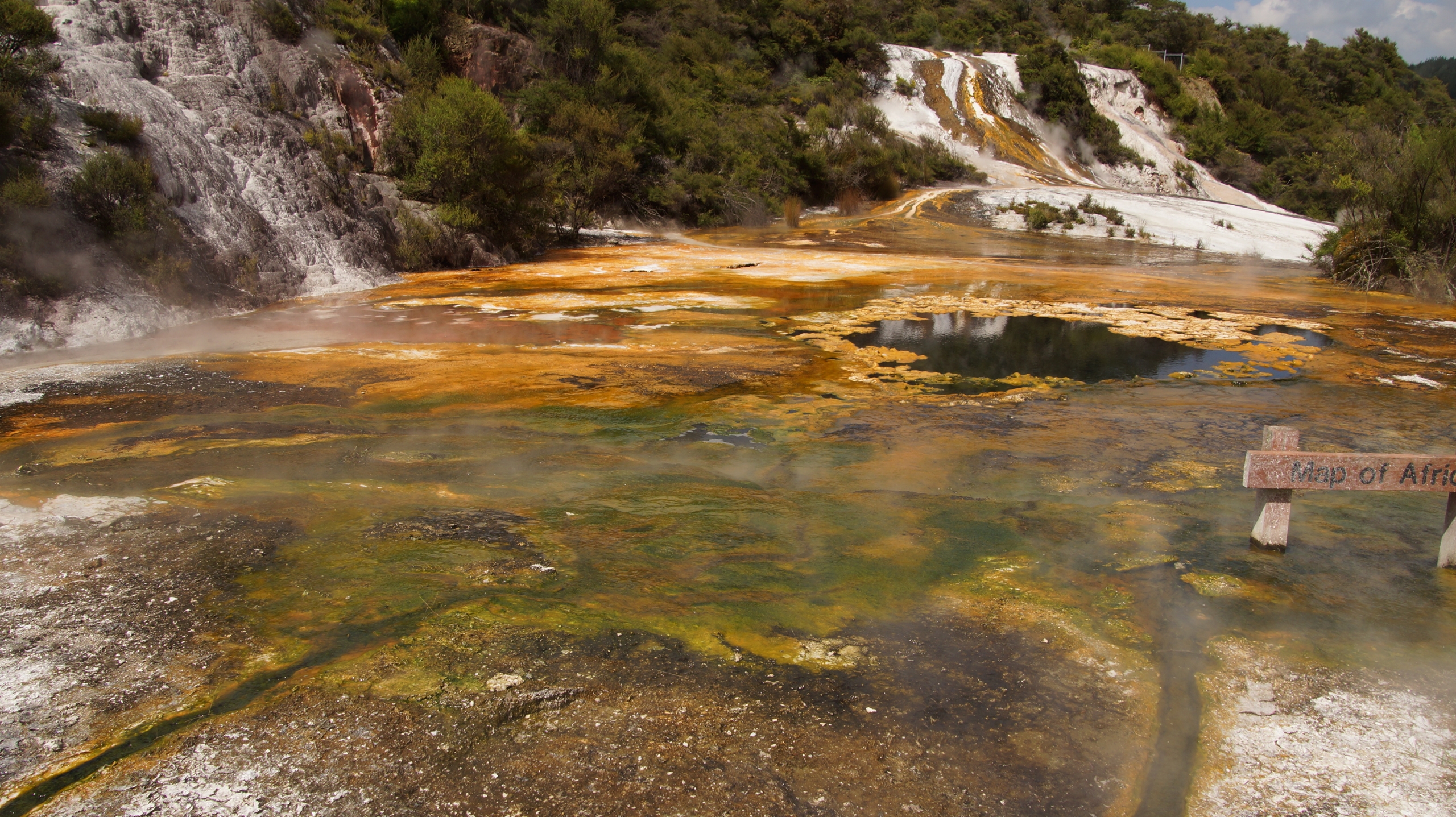There is a lot of hiking in Tongariro NP and Andre was a little bit sad that he could not do the Alpine Crossing but he didn’t want to leave Regina alone. Instead we hiked from the Tongariro Chateau to the Taranaki Waterfalls (ca 2 ½ hours return) and in the afternoon we flew over the Tongariro NP with a four seats Cessna with the company https://www.mountainair.co.nz/ The weather was gloriously clear and sunny and the scenery on this flight was so breathtaking that I had no words to describe it! The pilot was fantastic, very professional and knowledgeable about the park, its history and heritage.
The pilot flew very close to the volcanos. He flew several times around each volcano and we could take terrific pictures. However he still respected the holly places to the Maori folk. Beside this it was an excellent value for money. The flight was one of the absolute top highlights of our NZ trip.
After this wonderful flight we headed toward Taupo by taking the ‘Desert Road’.
In Taupo we visited the Huka Falls and the Maori Rock Carvings. The falls mark the spot where NZ’s longest river the Waikato is slammed into a narrow chasm making a dramatic 10m drop into a surging pool. The Maori Rock carvings are only accessible by boat. They were etched into the the cliffs by a carver in 70’s. They are nice, but I don’t know think it is worth to spend the time (ca. 3 hours return by boat) and the money to go there. Lake Taupo is the largest lake (240 sq. miles) in New Zealand and surrounded by mountains. When we arrived in the late afternoon, it was beautiful and we wandered around the town along the lake. Later we spent a gorgeus evening with a bottle of wine on the shore.
After spending the night in Roturua we headed next morning to the volcanic landscape of Orakei. A walking track follows stairs and boardwalks around the colorful silica terraces for which the park is famous and passes geysers and natural caves.
The other day we drove to Wai-o-tapu, another geothermal reserve. Everyone encouraged us to see the geyser that goes off everyday at 10:15am. We wondered why that exact time daily? Well, it is because a park ranger puts a bar of soap down the geyser at 10:10 everyday and that causes the reaction that causes the geyser to blow! The volcanic landscape is amazing and has a colourful array of geothermal features including The Champagne Pool, Artist’s Pallete, Devil’s Bath and some fabulous mud pools. The colors are so powerful that I had to check the camera’s white balance to make sure the colors are close to the nature.
Our next destination was the Coromandel Peninsula. The Coromandel Peninsula is a rugged and scenic peninsula that is east of Auckland and has beautiful beaches, mountain drives, secluded harbors and a few small villages.
The road snakes along the coast past pretty little bays and rock beaches. Houses and villages are scattered around the pitoresque bays. Sometimes the road heads away form the coast and climbs over several hills and valleys.
One major point of interest on the Coromandel Half island is Hot Water beach. For two hours of low tide, you can access an area of sand in front of a rocky outcrop at the middle of the beach where hot water oozes from beneath to the surface. If you bring a spade you can dig a hole and have your own spa. People dig large holes and sit in them like hot tubs enjoying the bubbling hot water! Gorgeous! Awesome atmosphere there like on village fair.
On our way to the north we stopped at Cathedral Cove. This is a gigantic rock arch on the beach. Up the hill where the path begins the car park was busy so we had to park in the village. There is a ca. 2 hours rolling walk to get to the Cathedral Cove.
In Coromandel Town we took the Driving Creek train where a the potter Barry Bricknell built by hand over 25 years a unique train that runs up steep grades across four trestle bridges and through two handmade tunnels. The walls are fortified with glass bottles! The views from the train are astonishing. The seats in the train can be switches back when the train changes the direction. The wall fortification is out of bottle piles!
The next day we started the trip to the North: Cape Reinga.




